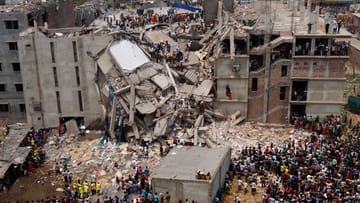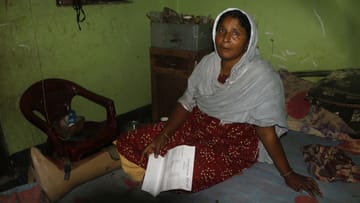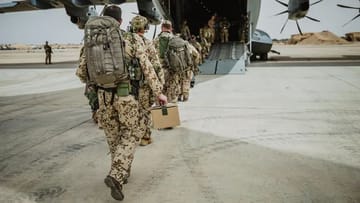[ad_1]
Good morning, dear reader
It is just a few mouse clicks away from the next deal. A branded T-shirt from Benetton costs only 19.90 euros. 29.99 Knitted sweater from German fashion store Adler. A pair of women’s jeans is available from C&A for €39.99. You can snag the KiK jogging pants for €7.99 and the kids’ shorts for €19.99.
inclusion
Yes, we live in a shopping paradise. Even those who have to watch out for money can help themselves in this country in the modern land of plenty. A lot of beautiful clothes in online stores and in shop windows in inner cities are amazingly cheap. Isn’t that great?
No it is not. never. Only those who leave not only down jackets, but also their brains in the toilet can be happy with the cheap prices for everyday clothes. Because what works for our wallets exploits an army of workers on the other side of the globe, who sew textile products in bulk in mills and “sweatshops” for starvation wages. We can only shop so cheaply because they get so little for their work.
This is not new, but today is the day to learn about it. Exactly ten years have passed since the day the factory complex was established Rana Plaza collapsed in Bangladesh. After that it was as if a bomb had fallen. But it wasn’t a blast. The building was dilapidated. 1127 people They died under the rubble, including hundreds of textile workers. Pictures of the disaster spread around the world. They have become a symbol of the miserable conditions in which poor people in the Third World sew very cheap clothes for us Westerners.
At that time, 32 textile fashion companies sewed in Rana Plaza or were associated with the production site. These include the brands mentioned above, whose clothes may also be hanging in your closet. Many companies, stunned by the public outcry, agreed to pay compensation. But as is so often the case in such cases, the money was only a short consolation for most of the victims’ families. 200 companies also signed an agreement on fire and building protection. Inspectors checked hundreds of production sites and started some improvements. Since then, there have been fewer accidents in textile mills in Bangladesh. A default German with the typical German name Supply Chain Due Diligence Act It now requires companies to conduct regular checks. This also made a difference.
The problem is still not resolved. Factories may be safer now, but many costume companies still pay low prices to local factory owners. Therefore, the exploitation of workers continues. Even working conditions for many women have deteriorated in recent times, according to reports Gisela Burkhardt From the women’s rights organization Femnet of the German Press Agency: “The work pressure has increased dramatically. You have to produce more in less time.” Textile exports from Bangladesh have rebounded after the factory collapse 10 years ago More than $42 billion doubles per year.
The equivalent of 69 euros per month is the minimum wage in Bangladesh. Too much to die, too little to live with dignity. More than four million textile workers struggle through life on this pittance; Many are forced to go into debt. And human rights activists say: for a decent life 200 euros necessary. But then all the nice t-shirts, jeans and jackets in the shops in this country are going to be just fine Ten percent more costs.
What do you mean: Would you rather buy a shirt if it costs €21.90 instead of €19.90, but you can be sure that those who sew it together on the other side of the world can live comfortably? I guess your answer. Then all that is missing is action.
It’s fair too
What then?
On the other hand, Chancellor Schulz travels to the summit of the North Sea in Ostend. Together with the heads of government of Belgium, Denmark, France, the Netherlands, Ireland, Great Britain, Luxembourg and Norway as well as the President of the European Commission Ursula von der Leyen, he plans to expand wind farms in the North Sea.
Transport Minister Volker Wessing presents the bike climate test results. More than 245,000 cyclists from all over Germany voted for the suitability of bicycles in their accommodation.
The railway workers had barely come to terms with the railways when the following union came close to striking: Verdi calls on its members to launch a one-day warning strike at Berlin-Brandenburg Airport.
Canada’s Federal President meets with Prime Minister Justin Trudeau. The country is a role model when it comes to hiring skilled labor and expanding renewable energies, and it is a firm democracy. Many German politicians would prefer a closer partnership with Canada to a precarious dependence on China.
[ad_2]
Source link



